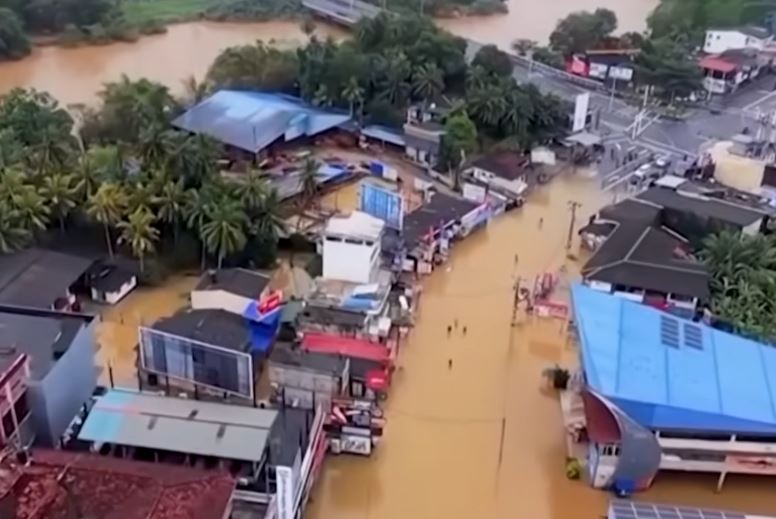WHY INDIA’S POPULATION NEED TO BE DOWNSIZED SIGNIFICANTLY ? – By N.S.Venkataraman

India has now emerged as the most populous country in the world in recent period, out beating China. The present India’s population is estimated to be in the region of 1450 million to 1500 million and appear to be “progressing” towards the population level of 1800 million by the year 2050 or may be even prior to that. Such level of population can appropriately be described as unacceptable or even as population explosion.
However, it is surprising that in India ,an alarm bell is not heard about such population growth trend , with some section of people claiming that such population level is a matter of strength for the country, referring to the misleading term “demographic strength”.
India’s comparative population density :
To get a clear idea and understand the gravity of the population issue in India , it would be appropriate to compare Indian population with that of the developed countries with large land size like India.
The land size in USA is 9.8 million square kilometer , which is nearly three times that of Indian land size of 3.3. million square kilometre. The population density in USA is 38 people per square kilometer compared to the India’s population density of 492 people per square kilometer.
In the case of China , the land size is 9.6 million square kilometer, which is nearly three times that of India but its population density is only 151 people per square kilometer China has successfully controlled the further population growth beyond this level, by insisting on one child norm per family . To stabilize the population at this level , China is now adopting suitably modified population policy , which speaks volume about the pragmatic forward looking population policy of Government of China.
In the case of Russia , the land size is 17.1 million square kilometer and population density is only 8.5 people per square kilometer.
The above comparative figures clearly indicate that the population density that India has now is unheard of in any other country in the world history. No government in any country in the world was confronted in managing such huge population with very high population density.
India’s crude birth rate (CBR ) and total fertility rate : ( TFR)
According to the latest Sample Registration Survey Statistical Report carried out in 2023 for the year 2021 and 2022 , It is reported that India’s crude birth rate (CBR -number of people per thousand population in a year ) has declined 0.7 point from 19.1 to 18.4 in 2023. India’s Total Fertility Rate (TFR ) has fallen for the first time to 1.9 in 2023.
However, the fall in CBR and TFR is not uniform throughout the country. In Bihar, the CBR is 25.8 and in Tamil Nadu, it is 12. Bihar reported highest TFR 2.8 among the bigger states.
The ground reality is that along with the falling trend of fertility rate and crude birth rate, the lifespan of the people are also steadily increasing due to advancements in medical technology. The average lifespan of Indian was reported to be 73 years in the year 2023 , as against 35 years in the year 1950.
In such circumstances, the population in the country is likely to increase steadily in the coming years, if the present trend were to continue.
Counter productive view of population advocates :
Some section of people in India , who can be termed as population advocates argue that any possible downsizing of population in the wake of fall in CBR and TFR should be checked immediately.
This is a counter productive suggestion that has been advanced without taking a holistic view of the affordable population carrying capacity of the country given its land size, the percentage of population at lower and marginal economic level , inequal distribution of income and opportunities and prevailing level of joblessness in the country.
What is the argument of population advocates ?
According to population advocates, while youth population in India represent major chunk of population ,the CBR and TFR moving below replacement level and increase in lifespan would result in large segment of population of aged people who would not be productive anymore. They cite the example of a few countries like Japan, Russia , where the steady fall in the CBR and TFR has caused concern about the average age of population. They also cite the example of China where , after prescribing one child per family, now China has been forced to give up its one child norm per family policy and is now encouraging people to have larger family size.
On the face of it, such view may look like acceptable and reasonable.
However , India’s population density is now so high that such view seem to be due to taking a careless over view of the scenario.
High population density and continued increase in population disproportional to the population carrying capacity of the country related to its land size. calls for immediate action to curb the population density. This is a question of cost benefit analysis and certainly the benefits of curbing the population growth would be far higher and certainly much less harmful than allowing the population to increase endlessly.
Joblessness issue :
In any country, social peace and communal harmony can be well maintained only by ensuring that the population in the working age group are kept reasonably occupied. It is well known fact that idle brain is devil’s workshop.
It is impossible to provide adequate job opportunities for all people in working age group in India with such highest population density in the world.
With increasing level of automation, introduction of robots and development of artificial intelligence , the job opportunities are likely to come down significantly in the coming years. It is already evident in several sectors including in factories and commercial centres. Large segment of Indian population are now employed in the agricultural field. There is already trend being witnessed that agriculturists are resorting to mechanization of farming , harvesting etc. to improve productivity and efficiency. Even spraying of pesticides and fertilisers on agricultural field are now being carried out by using drone to a considerable extent, replacing manpower. This trend is likely to continue.
Already, Government of India is grappling with joblessness issue and no governments in the past in India have been able to ensure job for all people or most people in the working age group.
There is increasing evidence of social tension seen on the ground as considerable section of youth population remain unemployed or under employed. In such scenario, the governments in India have been trying to “buy peace” by extending freebies to people , by spending huge money, which have now become unaffordable for the governments. This is like putting the cart before the horse.
“Overflowing “population:
To put it bluntly, one can say without fear of exaggeration that India is “overflowing” with people. This is the reason why number of Indians are seeking to migrate to other countries and seek job opportunities across the world.
This condition has resulted in resentment against the influx of people from other countries seeking jobs in several developed countries , as is seen now in anti migration agitation in United Kingdom and other countries. In such conditions, India’s high population density and “overflowing” population are being increasingly criticized in developed countries , attributing it for causing influx of migrants from India.
There is already criticism heard against Indian firms for what is termed as “body shopping” in different countries , where Indian firms virtually export manpower along with exporting products and services.
Government of India should act :
When India attained independence in 1947, India’s population was around 350 million people. In 75 years, I the population has catapulated to around 1450 million people. This should not go on.
What is particularly shocking is that a few poorly informed Chief ministers in states are asking people to give birth at least to three children in a family. It is also reported that a few religious outfits and regional outfits are asking people to have bigger families to expand their religious / regional base , without adequate understanding of the gravity of the population density issue in India.
It is evident that in the last several years, Government of India is not campaigning for population control in any effective way and only seems to be providing lip support for the population control policy.
The target for Government of India should be to downsize the population of the country to 1000 million people in the coming years and stabilize the population at this level. If the Government of India were to achieve this feat successfully, then perhaps, India could become economic super power, given its advantageous conditions such as strong agricultural field, availability of mineral deposits , skilled manpower etc.





















